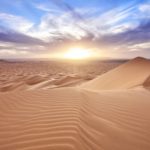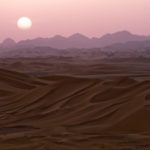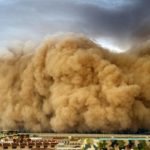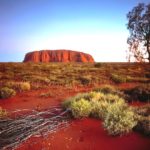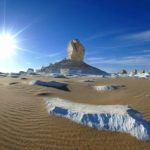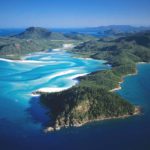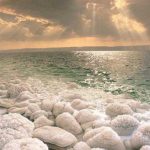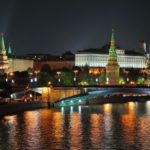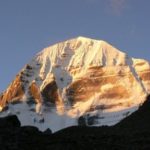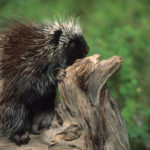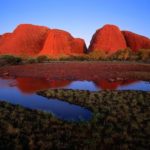Crescent Lake in the Gobi Desert
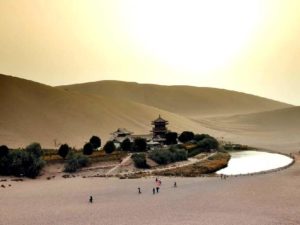 The boundless desert of the Gobi – one million three hundred thousand square kilometers covered with sand. It seems that life is completely absent here. Around only sand and sand. Now red, then yellow, then white, sometimes green and even black. From a distance, huge dunes resemble golden dragons shining with their sharp ridges. Only the scorching sun, from which you can not hide anywhere and silent silence.
The boundless desert of the Gobi – one million three hundred thousand square kilometers covered with sand. It seems that life is completely absent here. Around only sand and sand. Now red, then yellow, then white, sometimes green and even black. From a distance, huge dunes resemble golden dragons shining with their sharp ridges. Only the scorching sun, from which you can not hide anywhere and silent silence.
But then a weak breeze blew and a weak, barely audible sound appeared that resembled soft and pleasant music. The wind amplifies and this barely audible melody first turns into a ring, then into noise and crash, and finally becomes a crazy cacophony like the roar of an angry monster … The wind subsided and again ominous silence and scorching sun. Stepping heavily on the sand, you hardly climb a huge sand dune, and a sea of sand spreads before you, along which a caravan passes between the dunes of the dunes.
The caravan continued on its way, and we began to descend from the sandy Everest. But what is it? The sand under your feet seems to start whispering, but the steeper the descent, the louder these noises from which sounds come from. It was as if this monster, hidden beneath the dunes, awoke. The sound gets louder and louder, it starts to sound like the sound of drumming, then it goes into thunder peals, but the closer the end of the slope of the dune, the quieter it is, until finally it disappears. And again the oppressive silence and the scorching sun.
This is the famous singing sands of the Gobi Desert. There is a legend according to which in ancient times a fierce battle of two hostile armies took place here. But unexpectedly, the strongest storm began, which buried alive in the sands of the soldiers of both armies, pouring sand into these mountains. It is said that the sounds that are heard here are the cries of warriors buried in the sand. Scientists explain this phenomenon by the laws of physics about the friction of sand grains between themselves. But for some reason in other places the sand also rubs, but does not sing? This is a mystery of nature until it is solved.
The majestic mountains of the Singing Sands are very close, five kilometers from the city of Dunhuang in Gansu Province of China. Dunhuang, although it is a very old city, is not very large. Being built as a main stopping point on the Great Silk Road about 100 years BC Thanks to its favorable location, it is still a kind of fork from which roads go to India, to Mongolia, and to cities in mainland China. Dunhuang has always been a place of visits for Buddhist monks. They have built many temples and churches, some of them still exist today. The Mogao Caves or the so-called Thousand Buddha caves are still here – a reminder of the great past of this city. Dunhuang, like many years ago, is an important cultural center of the province.
But he is known not only for this reason. Not far from Dunhuang is one of the main shrines of Buddhism, the so-called Lake Crescent. It is surprisingly located in the very center of the singing sands in the lowlands, which has been around for centuries, somehow miraculously guarded from the huge dunes coming from all sides. This strikingly beautiful oasis in the desert is a true wonder of the world. Among the huge sand dunes is an amazingly beautiful lake, near which there is a small village. The buildings of the village are very peculiar, made in several levels, there are also famous Chinese pagodas there.
Although people almost ruined this pearl. It is said that about forty years ago, to irrigate the land to create farms, a dam was built on the Dang River, which flows in this region. And the natural groundwater system, which remained unchanged for centuries, was disrupted, and the lake began to shallow. Its depth became a little more than a meter. And perhaps the lake, which is on the UNESCO World Heritage List, would simply disappear. But in 2006, the authorities took a ride to save this miracle. A so-called “Three Prohibitions” program was organized, according to which new agricultural land was banned, new inflows to the area were restricted, and new wells were prohibited from being constructed and wells drilled. The lake began to revive and now it has almost acquired its former appearance.
